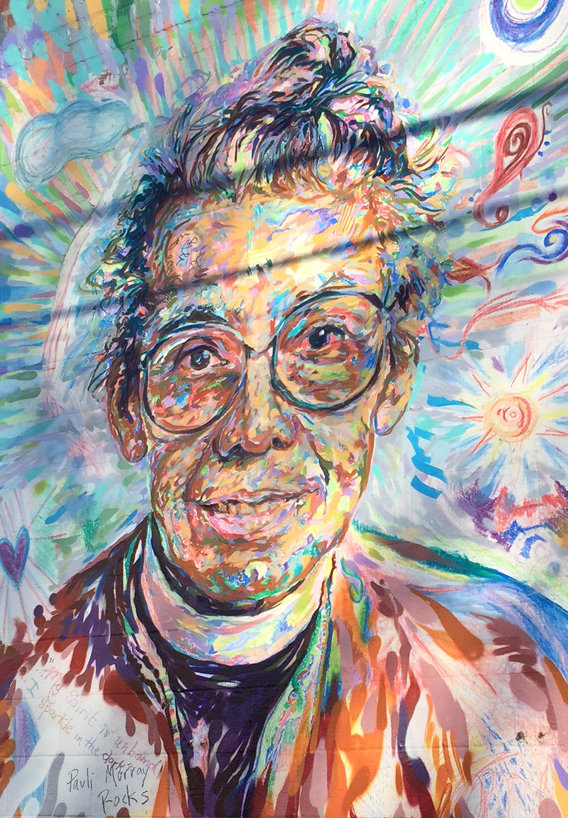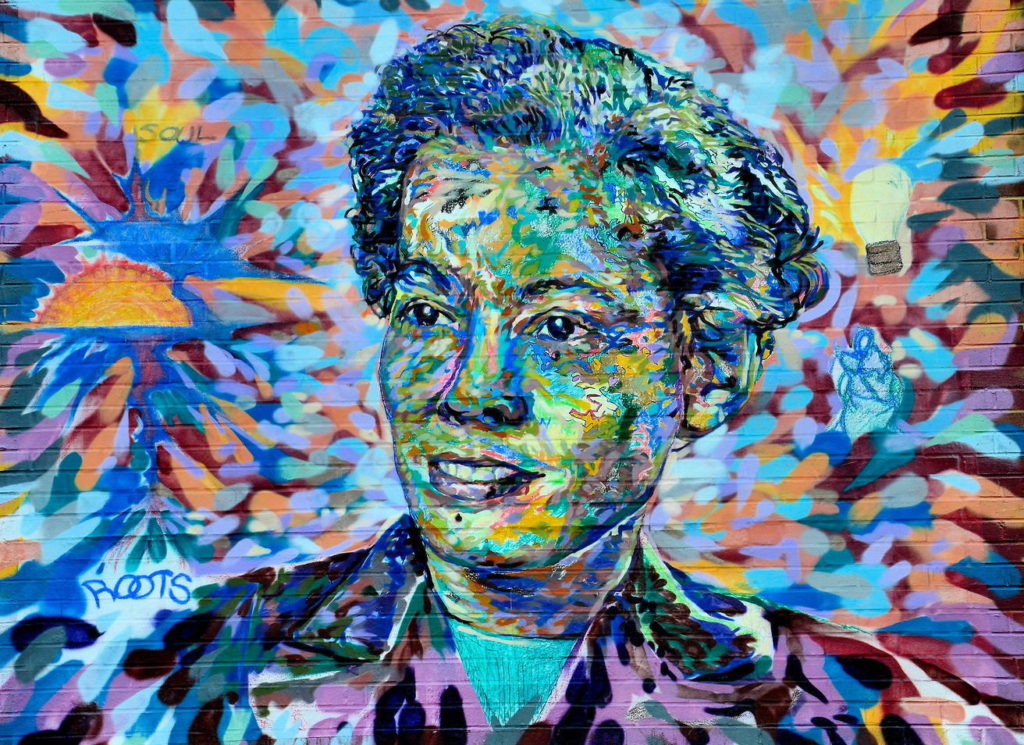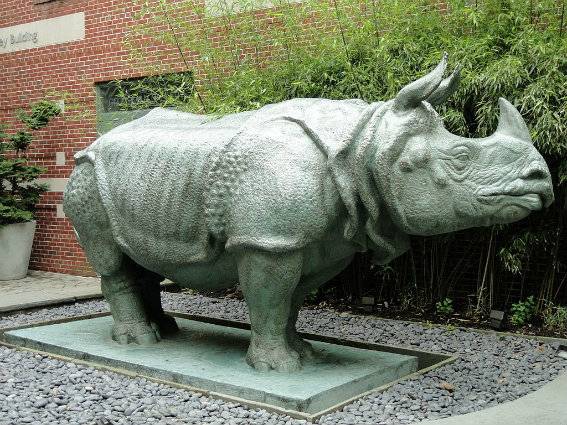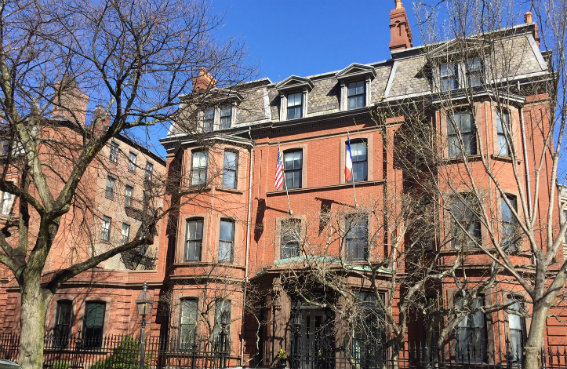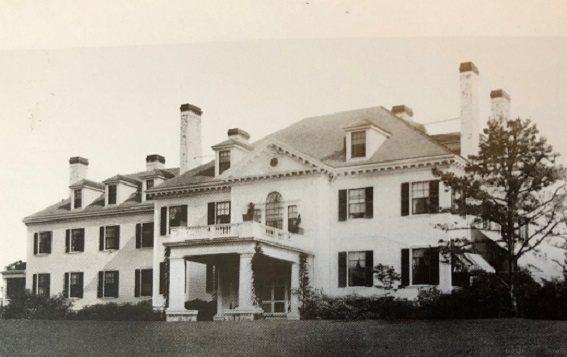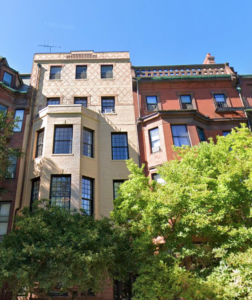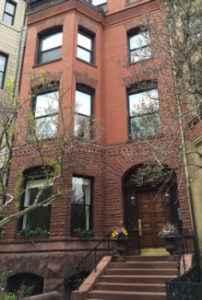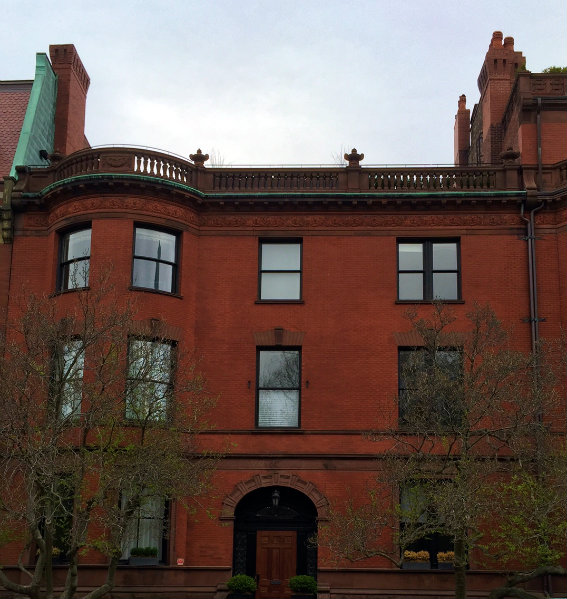Tag Archives: visual art
Stories
Greetings from Our Art Therapy Intern
2015
April 4. The New York Times reported that Pauli Murray‘s family home in Raleigh NC had been named a national treasure by the National Trust for Historic Preservation.
As part of the Pauli Murray Project a memorial mural painted on the brick wall of a former tobacco warehouse in Durham NC shows her flanked by panels that read:
As an Episcopal priest, Pauli Murray used the pulpit to find the “spirit of love and reconciliation” as expressed in her ministry as the “goal of human wholeness”. — Karla Holloway
It may be that when historians look back on 20th century America, all roads will lead to Pauli Murray. Civil rights, feminism, religion, literature, law, sexuality — no matter what the subject, there is Pauli. — Historian Susan Ware
Pauli Murray taught us that our lives are not defined by our race or our gender but by our striving to make the world a better place than when we found it. — Elnora J. Shields, Southwest Central Durham Quality of Life Project
See also:
2009
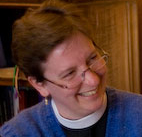 Our vestry called The Rev. Pamela L. Werntz to be our twelfth rector.
Our vestry called The Rev. Pamela L. Werntz to be our twelfth rector.
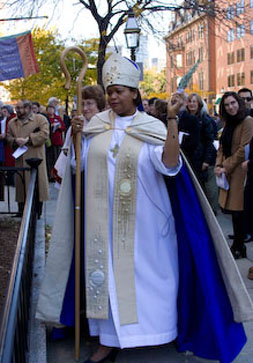
The Rt. Rev. Gayle Harris blessed our new garden.
Brett Cook and others in Durham NC completed the installation of Face Up: Telling Stories of Community Life, which includes five murals picturing The Rev. Dr. Pauli Murray. Installed at 117 S. Buchanan Blvd. is “Soul Roots” with an inscription from Proud Shoes: “It had taken me almost a lifetime to discover that true emancipation lies in the acceptance of the whole past, in deriving strength from all my roots, in facing up to the degradation as well as the dignity of my ancestors”.
1999
- Common Art began meeting. Administered by Ecclesia Ministries, it meets every Wednesday from 10am – 2pm in our parish hall. Please see G. Jeffrey MacDonald’s They made me an artist.
- Nov. 17. Safe Haven, a shelter for abused women, opened.
1989
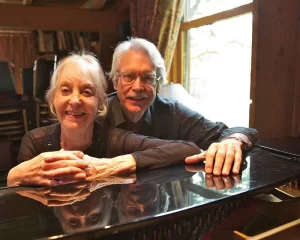 April 8. Emmanuel Music gave a concert in honor of Principal Guest Conductor John Harbison’s 50th birthday (20 Dec. 1988). His wife Rose Mary Pederson Harbison opened with a violin concerto she had played at its 1980 premiere.
April 8. Emmanuel Music gave a concert in honor of Principal Guest Conductor John Harbison’s 50th birthday (20 Dec. 1988). His wife Rose Mary Pederson Harbison opened with a violin concerto she had played at its 1980 premiere.- Katharine Ward Lane Weems died and bequeathed a pair of Spanish candelabra now standing in the baptistery of our Sanctuary. Born 22 Feb.1899, she was the only child of Emma Gildersleeve and Gardiner Martin Lane, who was chairman of the Board of Trustees of the Museum of Fine Arts from 1907 until his death in 1914. They lived at 53 Marlborough Street and were members of Emmanuel.
Katharine attended the Museum School from 1915 and began to show her work in 1920. She designed the brick friezes and bronze doors of Harvard’s Biological Laboratories with two massive bronze rhinoceri (one pictured below) installed in the courtyard in 1937.
See also
- Gardiner Martin Lane
- Her other works including the Dolphins of the Sea at the New England Aquarium and the Lotta Fountain on Boston’s Esplanade.
- Finding aid (with biography) for her papers at the Schlesinger Library, Radcliffe
- Her Odds Were Against Me: A Memoir as told to Edward Weeks (NY: Vantage Press, 1885)
1914
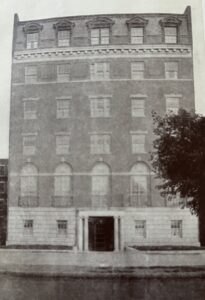 The Students’ House Corporation, under the direction of Mary S. Holmes and Charlotte Upham Baylies, built at 96 The Fenway a home for our Students’ House, which had been in rented quarters since its inception in 1899. They engaged architects Kilham & Hopkins, raised a large portion of its construction cost ($124K), and secured a mortgage for the remainder. The building is now Kerr Hall, a Northeastern University dormitory.
The Students’ House Corporation, under the direction of Mary S. Holmes and Charlotte Upham Baylies, built at 96 The Fenway a home for our Students’ House, which had been in rented quarters since its inception in 1899. They engaged architects Kilham & Hopkins, raised a large portion of its construction cost ($124K), and secured a mortgage for the remainder. The building is now Kerr Hall, a Northeastern University dormitory.
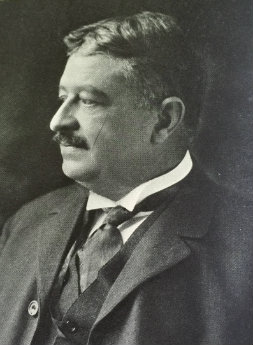
Gardiner Martin Lane from Harvard College Class of 1881 biography of him in the papers of Katharine Lane Weems at the Schlesinger Library, Radcliffe.
October 6. About a thousand people attended the funeral service for financier, philanthropist, and parishioner Gardiner Martin Lane (born 1859). The Rev. Dr. Elwood Worcester, The Rt. Rev. William Lawrence, The Rev. John W. Suter of Winchester, and The Rev. Prescott Evarts from Lane’s Harvard Class of 1881 officiated. Pallbearers included President A. Lawrence Lowell of Harvard, Sen. Henry Cabot Lodge, Charles Francis Adams, and several of his partners from Lee Higginson & Co.. Lynnwood Farnum played a Tchaikovsky funeral march and “Dead March” from Handel’s “Saul”. The boys choir sang “Abide with me” and “The strife is over”.
As treasurer of the New England chapter of the International Red Cross, Lane collected and distributed relief funds for the Salem fire (1914), the San Francisco earthquake (1906), and other disasters. Appointed trustee of the Museum of Fine Arts in 1906, and elected its president in 1907, he oversaw its move from Copley Square to the Evans Building on Huntington Ave., which was designed by Emmanuelite Guy Lowell. Spearheading the Museum’s fundraising effort for the new facility, Lane said, “A mere collection of beautiful objects is of little value unless seen, appreciated, and understood by many.”
His widow, Emma Louise Gildersleeve Lane, and daughter, Katharine Lane Weems, were parishioners for years after his death and generous benefactors to Emmanuel. Emma was the daughter of philologist Basil Lanneau Gildersleeve, who was a colleague of Gardiner Martin’s father George Martin Lane, a classics professor at Harvard.
See also our pages World War I Memorial and Katharine Lane Weems.
1894
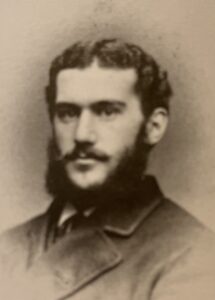 August 15. Architect and vestryman Arthur Rotch died of pleurisy at the age of 44. In 1892, he had moved to 82 Commonwealth Avenue with his bride Lisette DeWolf Colt. Son of Benjamin and Annie Rotch, founding members of Emmanuel, Arthur had graduated from Harvard College in 1871, studied architecture at MIT in 1872-3, and then gone to Paris to study at the Ecole des Beaux-Arts. In 1880, he joined George Tilden in designing houses at 197, 211, 215, 231 & 233 Commonwealth Avenue, among others. In 1886, with associate Ralph Adams Cram, they built Church of the Holy Spirit, Mattapan. In 1889, they designed a mission chapel for Emmanuel, which was never realized.
August 15. Architect and vestryman Arthur Rotch died of pleurisy at the age of 44. In 1892, he had moved to 82 Commonwealth Avenue with his bride Lisette DeWolf Colt. Son of Benjamin and Annie Rotch, founding members of Emmanuel, Arthur had graduated from Harvard College in 1871, studied architecture at MIT in 1872-3, and then gone to Paris to study at the Ecole des Beaux-Arts. In 1880, he joined George Tilden in designing houses at 197, 211, 215, 231 & 233 Commonwealth Avenue, among others. In 1886, with associate Ralph Adams Cram, they built Church of the Holy Spirit, Mattapan. In 1889, they designed a mission chapel for Emmanuel, which was never realized.
In 1886, Arthur became a member of the Corporation of MIT and served as chairman of its Department of Architecture until his death. Having with his sisters established in 1883 the Rotch Traveling Scholarship in memory of their father, he bequeathed funds for the Rotch Library at MIT. He was chairman of Harvard’s Visiting Committee of Fine Arts, founder of the Boston Architectural Club, trustee of the Museum of Fine Arts, and trustee and benefactor of the Mass. Eye & Ear Infirmary. Our Rotch Reredos was given by his sister Aimee Sargent in memory of him, their sister Edith. and their parents.
See also
- 1886 for Church of the Holy Spirit, Mattapan, which he designed.
- Wikipedia’s entry for Arthur & for a list of their works Rotch & Tilden
- Back Bay Houses for their works in the Back Bay
- Bainbridge Bunting‘s Houses of Boston’s Back Bay (Cambridge: Harvard U. Press, 1967) discusses several of their works in depth.
- A Continental Eye: The Art and Architecture of Arthur Rotch: the Catalogue of an Exhibition Held at the Boston Athenæum, December 10th, 1985, through January 24th, 1986, and at the Klimann Gallery of the MIT Museum, February 10th through April 5th, 1986, by Harry L. Katz and Richard Chafee.


